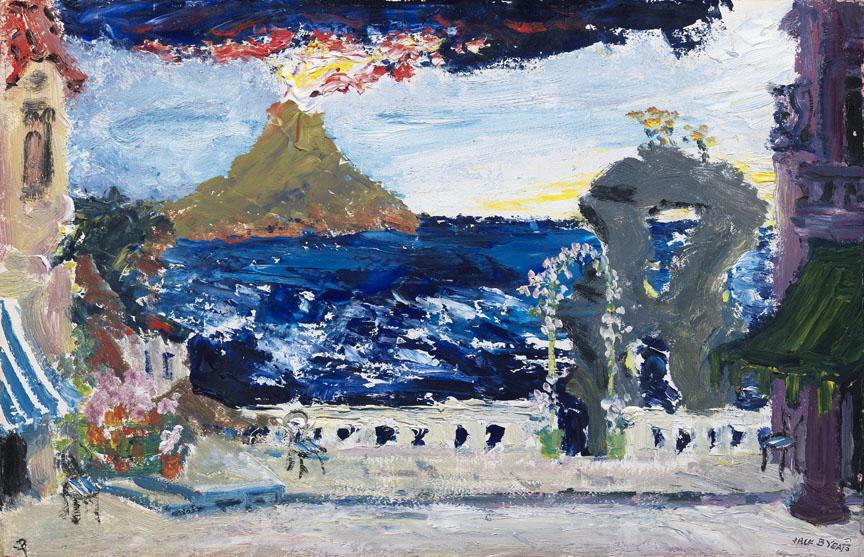They were originally framed together. The fact that the title echoes that of Pirandello's play Six Characters in Search of an Author (1921) not only indicates Yeats's fascination for modern drama but is also a reminder of his personal association with the Theatre of the Absurd.
Yeats had always enjoyed drama, particularly the melodrama of the early years of the 20th century, which he imitated in his own plays for miniature stage. During the 1930s he returned to playwriting. In 1939 Harlequin's Positions was produced at the Abbey Theatre. In 1942 'La La Noo' appeared, with 'In Sand' in 1949. In these he knitted together a love of music hall theatre with a deeper, more contemporary approach that was influenced by cinema - which also had its effects on paintings of this period.
Scene One of the Four Scenes in Search of Characters, set in Naples, recalls the adventures of Yeats's early heroes, although none of his juvenile dramas is set in Italy. Vesuvius can be seen jettisoning flames into the dark blue sky. In the foreground is a terrace looking on to the sea. The buildings to each side have coloured awnings and inviting entrances, and the scattered chairs, the grotto-like arch, and the opening in the balustrade where there must be a path up from the sea, are ready for action. The choppy sea and the volcanic mountain are the only signs of life so far, awaiting the characters to make their entrance.
(National Gallery of Ireland: Essential Guide, 2008)
Jack B. Yeats: Loan Exhibition, Tate Gallery, London, 1948
Jack B. Yeats: Selected works from the Niland Collection, Sligo, 8 March - 30 November 2008

